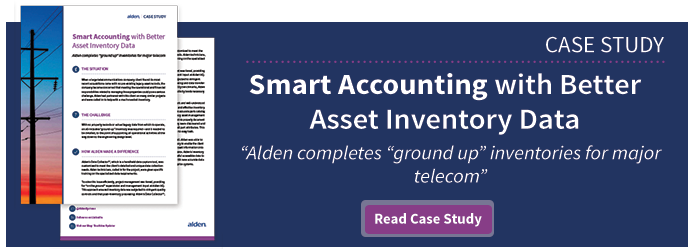Refuse or Revenue: Inventory Management Reveals Spare Equipment
 The world changes fast. Constant technological shifts mean companies must upgrade equipment regularly to remain competitive and up-to-date with current standards. This is the price of doing business in the mile-a-minute 21st century, and sometimes these "revolutions" take place before a business has a chance to fully use up or depreciate the existing equipment they possess. This leads to outdated assets laying around and taking up space in warehouses, cluttering inventories with usable but obsolete equipment.
The world changes fast. Constant technological shifts mean companies must upgrade equipment regularly to remain competitive and up-to-date with current standards. This is the price of doing business in the mile-a-minute 21st century, and sometimes these "revolutions" take place before a business has a chance to fully use up or depreciate the existing equipment they possess. This leads to outdated assets laying around and taking up space in warehouses, cluttering inventories with usable but obsolete equipment.
Making the Most of Unused Equipment
We have written about the advantages—organizational and fiscal—of having detailed inventory management work performed regularly and done well. But what can a company do to turn unused but still-working items into profitable assets?
1. Sell unused assets
The supply of aftermarket parts is a $400 billion dollar business spanning nearly every industry and covering all sorts of items from replacement toner cartridges to cell phones to cruise ship engines. Sales of excess or outdated items can be turned into an important profit source. Many in the Fortune 100 rely on the aftermarket for up to 40 percent of their profits.[1] The bottom line: creating a profit center from unused items is pure benefit, freeing space for vital assets, while creating revenue from items that might otherwise be junked or scrapped at a loss.
2. Donate excess assets
In some industries, donation of unused, outdated or excess equipment to local causes can be a boon to community connection and goodwill. In telecommunications as well as heathcare, it can mean big benefits to populations in developing countries. From entities such as Project C.U.R.E. to Medshare, organizations designed to funnel equipment that might otherwise end up in US landfills to countries where they are needed most are easy to find.
3. Nip excess asset waste in the bud
Beyond cleaning out excess, outdated or unused assets found in inventory, companies would be well served to keep a close eye on stock levels and purchasing plans up front, eliminating as much unneeded equipment buildup from the start. From figuring out optimal safety stock or min/max levels to having an accurate count of all vital assets currently in stock, this type of organization is best achieved by practicing smart inventory management.
You can start with the documentation of all assets currently in inventory. Collect that information and upload it into a database solution that can integrate with your company’s accounting software. Then repeat this process all over again with regularity. The most successful and accurate inventory is one that is executed thoroughly and often.
Need assistance with an asset inventory? Or want to talk about how to improve your process?
Click here.
[1] http://www.werc.org/assets/1/workflow_staging/Publications/666.PDF

Comments